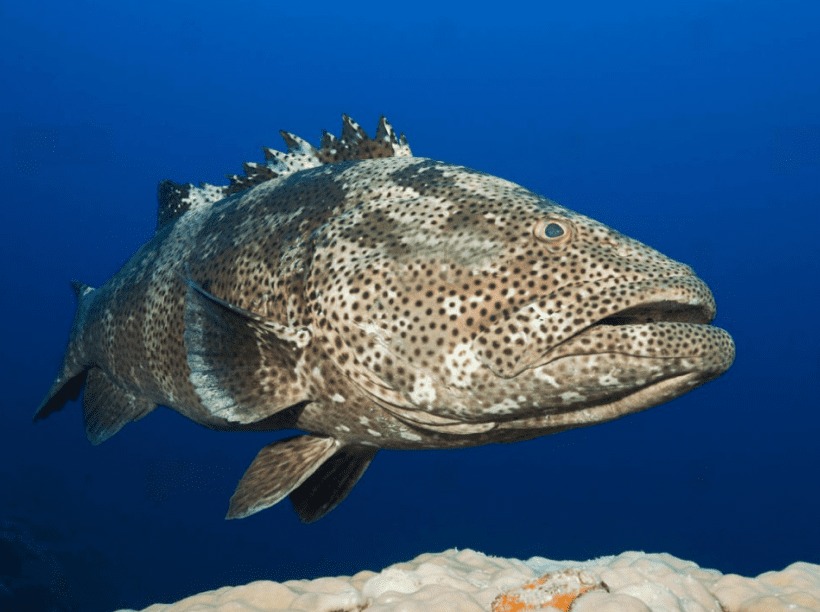Other names: Blackspot rockcod, Estuary rockcod, Giant rock cod, Greasy grouper, Malabar rockcod
The Malabar Grouper, also known as the Estuary Cod, is a large predatory fish found in tropical and subtropical waters of the Indo-Pacific region. It typically inhabits coastal reefs, estuaries, and mangrove areas. With its robust body and wide mouth, the Malabar Grouper preys on a variety of fish, crustaceans, and cephalopods. This species is popular among anglers due to its size and strength, making it a challenging catch. It is also significant in commercial fisheries and aquaculture.

Other names
Blackspot rockcod, Estuary rockcod, Giant rock cod, Greasy grouper, Malabar rockcod
![]() Length
Length
~100" (max 234)
![]() Weight
Weight
~50" (max 150)
![]() Water
Water
Salt
![]() Water Temp
Water Temp
16-30° F
![]() Depth
Depth
2-150 ft
Always open
5
-
-
-
38 cm
Total length
-
The Malabar Grouper thrives in coastal reefs, estuaries, and mangroves, often found in brackish waters
It prefers habitats with plenty of cover, such as rocky crevices, coral formations, and submerged structures
This species is solitary and highly territorial, often staying within a defined home range
As a carnivorous predator, it primarily feeds on fish, crustaceans, and cephalopods, using ambush tactics to capture prey
The Malabar Grouper matures relatively late and exhibits protogynous hermaphroditism, where individuals start as females and may later become males
Spawning typically occurs in specific seasons, with eggs released in large batches and fertilized externally
Larvae are planktonic, drifting in open water before settling in juvenile habitats like estuaries
As they grow, juveniles gradually move to deeper reefs, where they establish territories and continue their solitary lifestyle